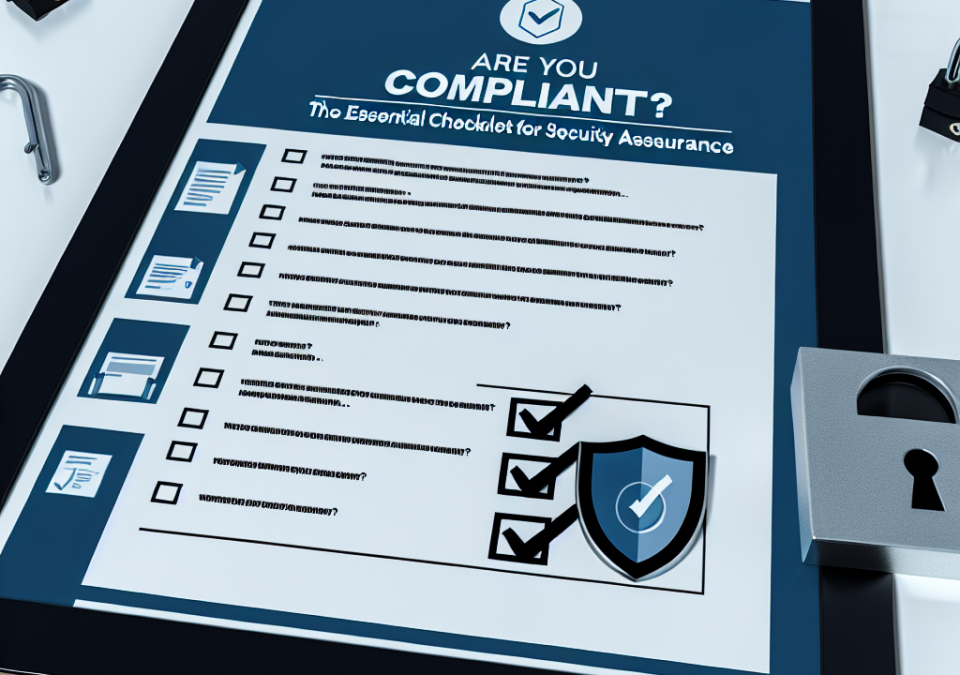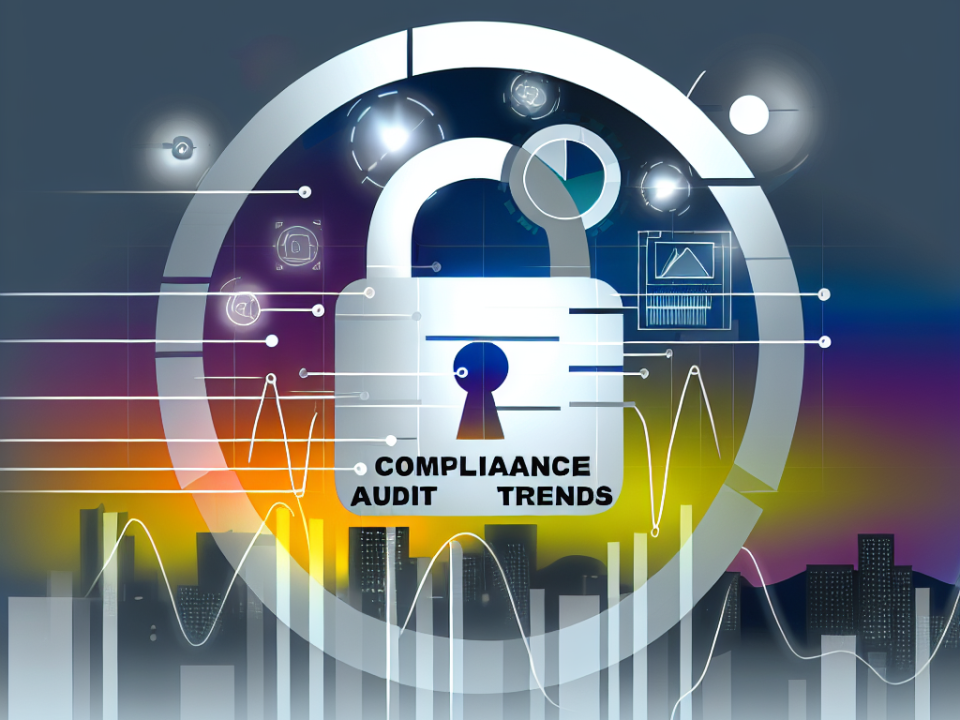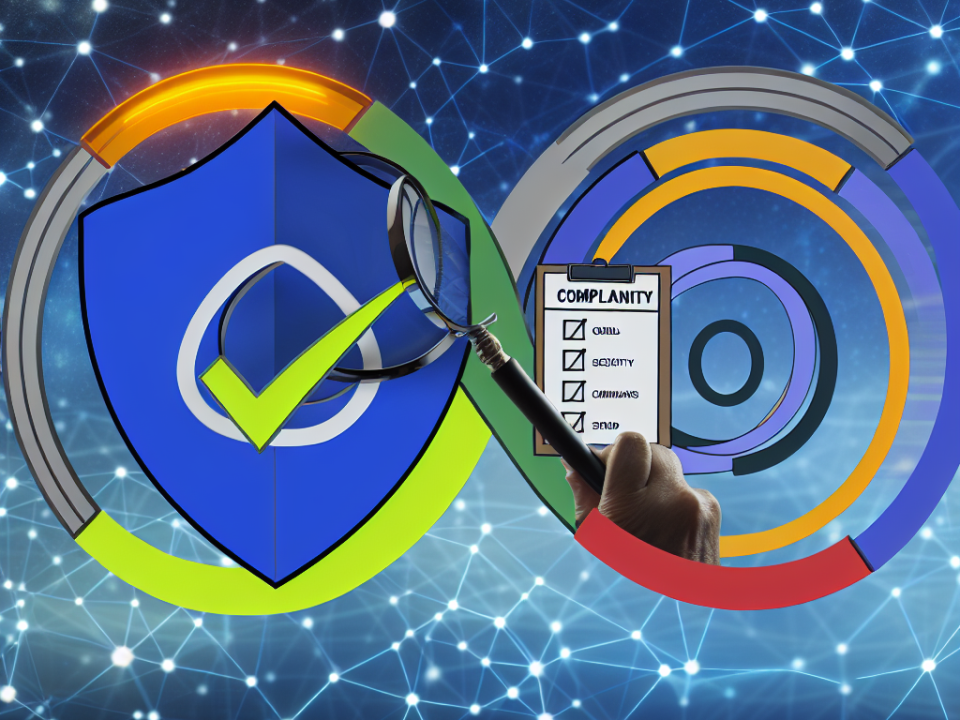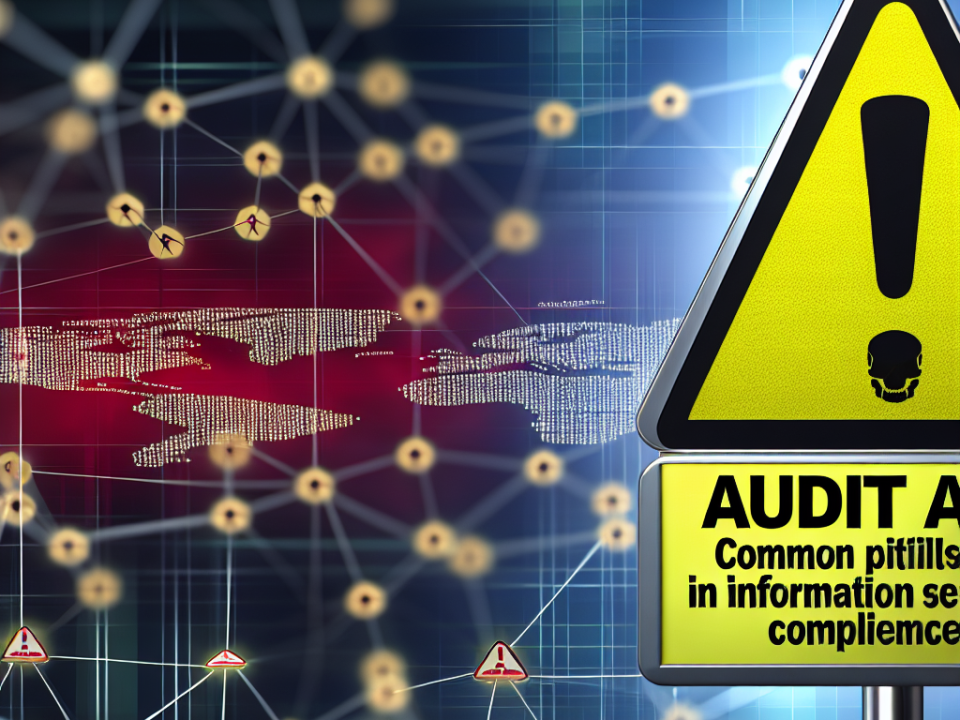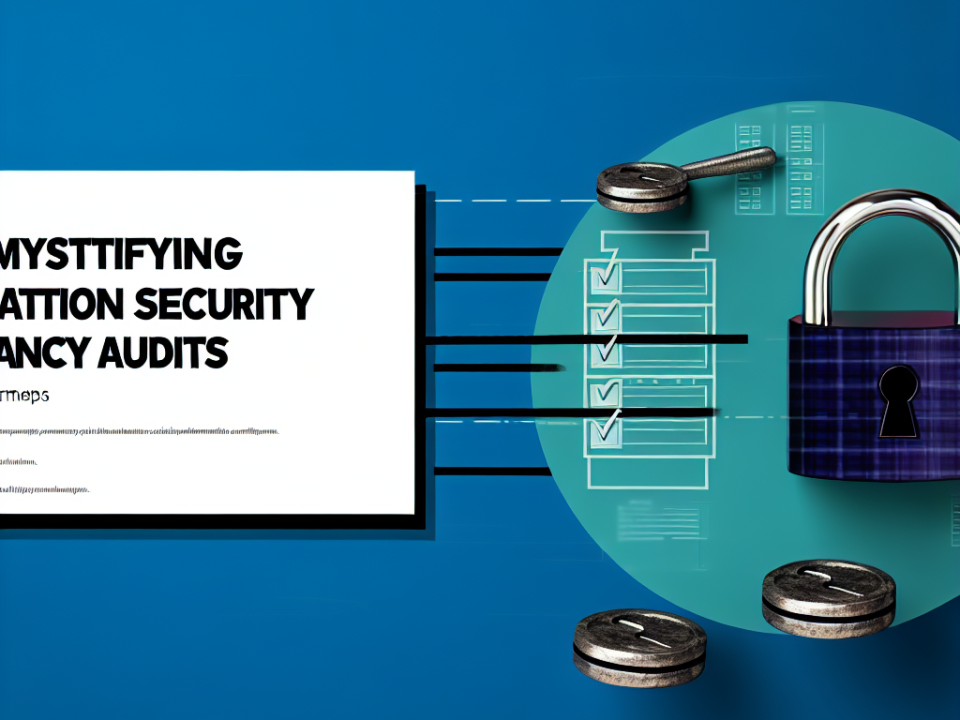
The Quantum Leap: How Quantum Computing Will Transform Cybersecurity
July 25, 2025
Human Factor: The Role of Cyber Awareness in the Future of Security
July 26, 2025
In today’s increasingly digital world, compliance with security regulations is not just a best practice; it’s a necessity. Organizations are required to understand and adhere to a variety of regulations designed to protect sensitive information from theft, loss, and unauthorized access. To ensure your organization is compliant, a structured approach is essential. Below is a comprehensive checklist designed to help you navigate the complexities of security assurance.
Understanding Compliance
Before diving into the checklist, it’s crucial to grasp what compliance entails. Compliance refers to adhering to laws, regulations, and guidelines related to security measures. Different industries may have different requirements, such as GDPR for data protection in the European Union, HIPAA for healthcare in the U.S., or PCI DSS for payment card security. Each set of regulations aims to protect users and maintain trust.
The Essential Compliance Checklist
1. Risk Assessment
- Identify Assets: List all critical assets, including data, applications, and infrastructure.
- Determine Threats: Analyze potential threats to these assets, such as cyber threats, natural disasters, and human error.
- Assess Vulnerabilities: Evaluate each asset’s vulnerabilities to determine where improvements can be made.
- Evaluate Impact: Assess the potential impact of threats on your organization.
2. Policy Development
- Security Policies: Develop clear security policies that outline acceptable use, data protection, and incident response.
- Compliance Policies: Ensure policies address specific compliance requirements applicable to your organization.
- Employee Training: Regularly train employees on these policies and their roles in maintaining compliance.
3. Access Control
- User Access Management: Implement role-based access control (RBAC) to restrict sensitive data access to authorized personnel only.
- Authentication Measures: Utilize multi-factor authentication (MFA) to enhance security.
- Regular Audits: Conduct regular audits to ensure user access aligns with current roles and responsibilities.
4. Data Protection
- Data Encryption: Encrypt sensitive data both in transit and at rest to prevent unauthorized access.
- Data Retention Policies: Establish and enforce data retention guidelines to determine how long data is kept and when it should be securely disposed of.
- Backup Procedures: Implement regular backup procedures to ensure data recovery in case of incidents.
5. Incident Response
- Incident Response Plan: Develop a comprehensive incident response plan detailing steps in case of a security breach.
- Communication Plan: Establish a communication strategy for informing stakeholders, including customers and regulatory bodies, when a breach occurs.
- Regular Drills: Conduct regular drills to prepare the team for potential incidents and improve response times.
6. Monitoring and Auditing
- Continuous Monitoring: Implement systems for continuous monitoring of your IT environment to detect anomalies.
- Audit Trails: Maintain detailed logs of access and changes made to sensitive data and systems to support accountability.
- Third-party Audits: Engage external auditors for impartial assessments of compliance and risk management practices.
7. Compliance Reporting
- Documentation: Keep meticulous records of compliance efforts, including policies, assessments, and training sessions.
- Compliance Updates: Stay informed on regulatory changes and update policies accordingly.
- Reporting Procedures: Establish a clear process for reporting compliance status to management and stakeholders.
8. Vendor Management
- Vendor Assessments: Evaluate third-party vendors for compliance with your security standards.
- Contracts: Ensure that contracts with vendors include necessary provisions regarding data security and compliance.
- Ongoing Monitoring: Regularly review vendor security practices and compliance status.
Conclusion
Adhering to compliance regulations is an ongoing process that requires diligence, commitment, and a proactive approach. By systematically assessing your organization against this essential checklist, you will bolster your security posture and ensure you meet both industry standards and regulatory requirements. Remember that compliance is not just about meeting legal obligations; it’s about building a culture of security that fosters trust and protects your organization’s interests.
Revisiting this checklist periodically will help you stay ahead of the curve in an ever-evolving landscape of security threats and compliance requirements. Are you compliant? Use this checklist as a guide to navigate the path to enhanced security assurance.

